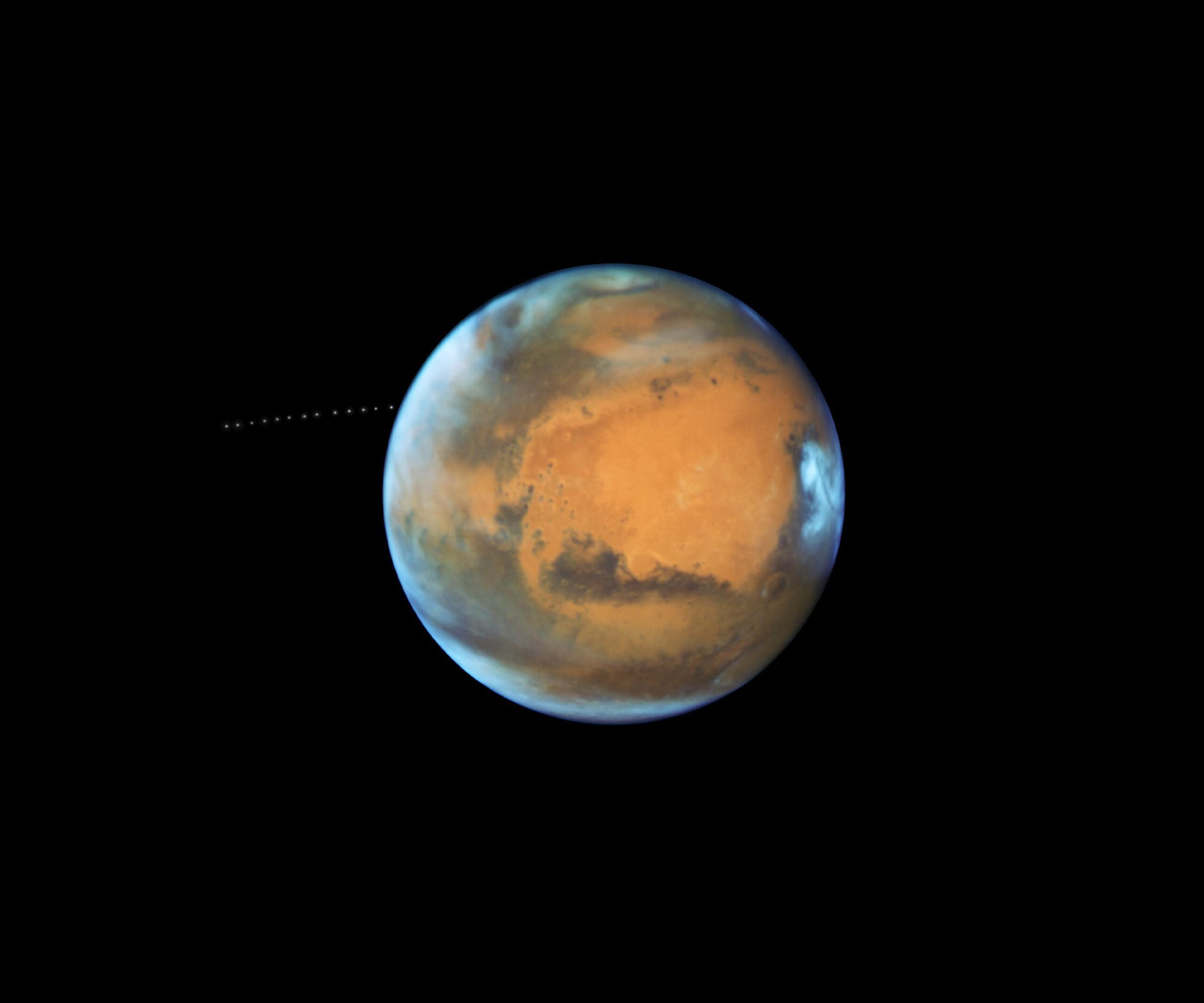The NASA rover Perseverance recently discovered a strange rock on Mars, which appears to be made up of small rounded stones a few hundred millimeters in diameter. NASA’s research team is trying to determine its origin.
Perseverance was launched in July 2020 with the mission of searching for traces of microorganisms that may have existed on Mars in ancient times. It carries seven scientific instruments, including SuperCam, which uses cameras, lasers, and spectrometers to study the Martian surface, and Mastcam-Z, a camera with a special filter to increase resolution, which is used to record high-definition video as well as panoramic color and 3D images. The rover is exploring the Jezero Crater, a region of Mars thought to have once been a river delta.
This is not the first time such a strange rock has been discovered on the Red Planet. In the past, Martian rovers have discovered a number of strange objects that could hold important clues as to the geological history of Mars.
A selfie taken by NASA’s Perseverance rover. This photograph is a composite of 59 images taken by its WATSON camera, which is mounted on an arm.
PHOTOGRAPH: NASA/JPL-CALTECH/MSSS
It was early March 2025 when Perseverance arrived at Broom Point on Witch Hazel Hill, on the rim of the Jezero Crater.
Witch Hazel Hill is located in the lower left of this photo. The blue line marks the path of Perseverance.
PHOTOGRAPH: NASA/JPL-CALTECH/UNIVERSITY OF ARIZONA
Satellite observations had shown alternating stripes of light-colored and dark-colored rock in this area. In late March, Perseverance excavated one of the light-colored formations and collected a sample. In the process it discovered the strange rock—which has been named “St. Paul’s Bay.”
A photo of the St. Paul’s Bay rock, the darker object on the right of the image. This photo was taken by Perseverance on March 13, 2025, using Mastcam-Z.
PHOTOGRAPH: NASA/JPL-CALTECH/ASU
According to the Perseverance team, St. Paul’s Bay is a “float” rock—that is, a rock that should not exist at this location. But what created this rock formation on Mars, and how it came to be located in this region, remains unknown. This rock appears to be made up of smaller, round, dark gray stones each several hundred millimeters in size. The shapes of these small round stones vary: Some are oval-shaped, some have sharp edges, and some have small holes in them.
It’s possible that these spherules are concretions—formations created by groundwater moving through pores in a rock, which suggests that there might have once been abundant liquid water on Mars. However, on Earth these spherules are also created when molten rock cools rapidly, for example after a volcanic eruption. The Perseverance science team is investigating the origin of the small round stones that make up St. Paul’s Bay. It is possible that they are derived from a dark-colored stripe of rock formation observed nearby.
A magnified view of the St. Paul’s Bay rock. This photo was taken by Perseverance on March 11, 2025, with the Remote Micro Imager (RMI) on its SuperCam.
PHOTOGRAPH: NASA/JPL-CALTECH/LANL/CNES/IRAP.
NASA’s Mars rovers have also discovered a number of other strange rocks during their missions. The first pictured below were nicknamed “blueberries” and were found by the rover Opportunity. They were discovered near Fram Crater, which Opportunity explored during April 2004. Opportunity launched in July 2003 and landed on the Meridiani Plain on Mars’ equator in January 2004. Opportunity continued to explore Mars for more than 15 years until its mission ended in February 2007. The blueberries are said to be rich in hematite, a type of iron oxide (Fe2O3).
Nicknamed “blueberries,” these Martian rocks were photographed by NASA’s Opportunity rover using a microscopic imager (MI) and panoramic camera.
PHOTOGRAPH: NASA/JPL-CALTECH/CORNELL/USGS
Next was a formation discovered by NASA’s rover Curiosity, in which many small round stones are visible. This formation is part of a formation called the “sheepbed,” exposed in an area on Mars called Yellowknife Bay. These small round pebbles are often found in other parts of the sheepbed as well. Curiosity was launched in November 2011 and continues to explore Mars.
Curiosity photographed the “sheepbed” formation in Yellowknife Bay, a shallow basin located within Gale Crater, just south of the Martian equator.
PHOTOGRAPH: NASA/JPL-CALTECH/MSSS
The final image below is of a sedimentary rock formation with a “popcorn” texture, discovered by Perseverance. After completing its exploration of a part of the Jezero Crater called Mt. Washburn, Perseverance headed north and reached an area in the Neretva Valley called Bright Angel, where layered, light-colored rocks are exposed on the surface. It was here that Perseverance discovered this strangely textured rock formation, which also contains small rounded stones.
Perseverance took this photo in the Neretva Valley in June 2024 using its Mastcam-Z.
PHOTOGRAPH: NASA/JPL-CALTECH/ASU
This story originally appeared on WIRED Japan and has been translated from Japanese.




